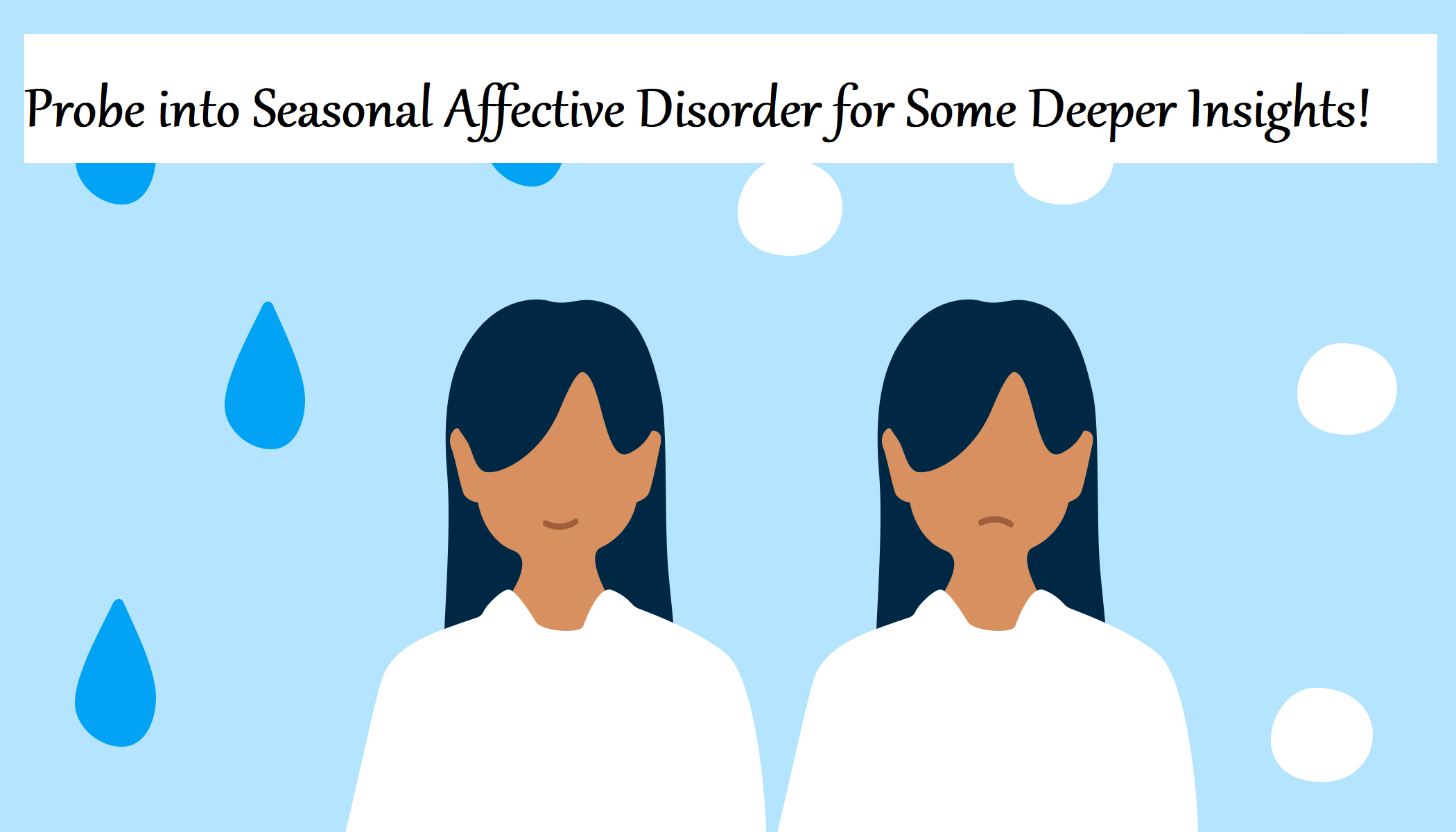
To an ordinary mind, depression is depression, and that’s about it, while symptoms and causes tremendously affect one’s treatment and recovery. Hence, please don’t think all depressive moods are the same. For instance, consider Seasonal Affective Disorder (SAD). SAD is a mood swing condition commonly prevalent during fall and winter. Do you know some people during the cold season suffer from this? The dim daylight and the busy holiday season influence the mood more. Spring season can resolve this issue. However, few cases can feel its impact even during bright spring and summer seasons. Symptoms can also vary based on the severity of the disorder.
Seasonal Affective Disorder (SAD) Vs. Major Depressive Disorder (MDD)
MDD is not seasonal. Instead, it can affect anyone at any time. The symptoms include appetite loss, weight changes, insomnia, irritability, low mood, lack of focus, fatigue, absence of feelings of pleasure and interest in anything, etc. One can feel distressed for a minimum of two weeks. SAD can make you feel lethargic, causing you to eat and sleep more. Low mood can be standard here. However, symptoms vary from person to person. The main differentiator between the two types of depression is a seasonal occurrence that is more predictable during winter. Doctors warn that MDD can debilitate your health severely. They recommend a traditional medicine like Wellbutrin XL for mood regulation. If you need to buy it, look for the Wellbutrin XL coupon to reduce your bill.
Causes of Seasonal Affective Disorder
Stress can be another factor. Depression and stress are each other’s enemies. A SAD patient can struggle to handle stress in winter compared to brighter months. One can find it stressful to perform daily chores like waking up in the morning, meeting deadlines, working on projects, etc. Sometimes, genetics can also be responsible for this condition. Overall, depression can occur due to disturbed circadian rhythm, eye sensitivity to light, affected serotonin levels, and more.
Alternative Treatment for SAD
Apart from anti-depressants, you can go for psychotherapy or cognitive behavior therapy. Although helpful, most people avoid it for cost reasons. Nevertheless, you can try other things also. For instance, improve lighting in your home in winter. Go outdoors more often. Focus on yoga and meditation for stress management. Walking, loving-kindness, mindfulness, and other meditative methods can yield desirable results. Exercise can be good for stress management and SAD. Make sure you do it religiously, regardless of your chosen workout style. Diet is another critical aspect. One can eat many complex carbohydrates, vegetables, proteins, and unprocessed foods. Vitamin D supplements can also help. At the same time, consider including milk, cereal, orange juice, fish, and oatmeal to supply yourself with this vitamin type.
People panic when they learn about depression. Please avoid isolating yourself. Talk to therapists and your loved ones. Correct treatment and medication go a long way. With proper support, you can manage your condition well. Also, you are not alone in this fight. Many others also suffer from this disorder. Hence, you don’t need to feel shame or embarrassment about it. When you accept your disease, you recover better.






